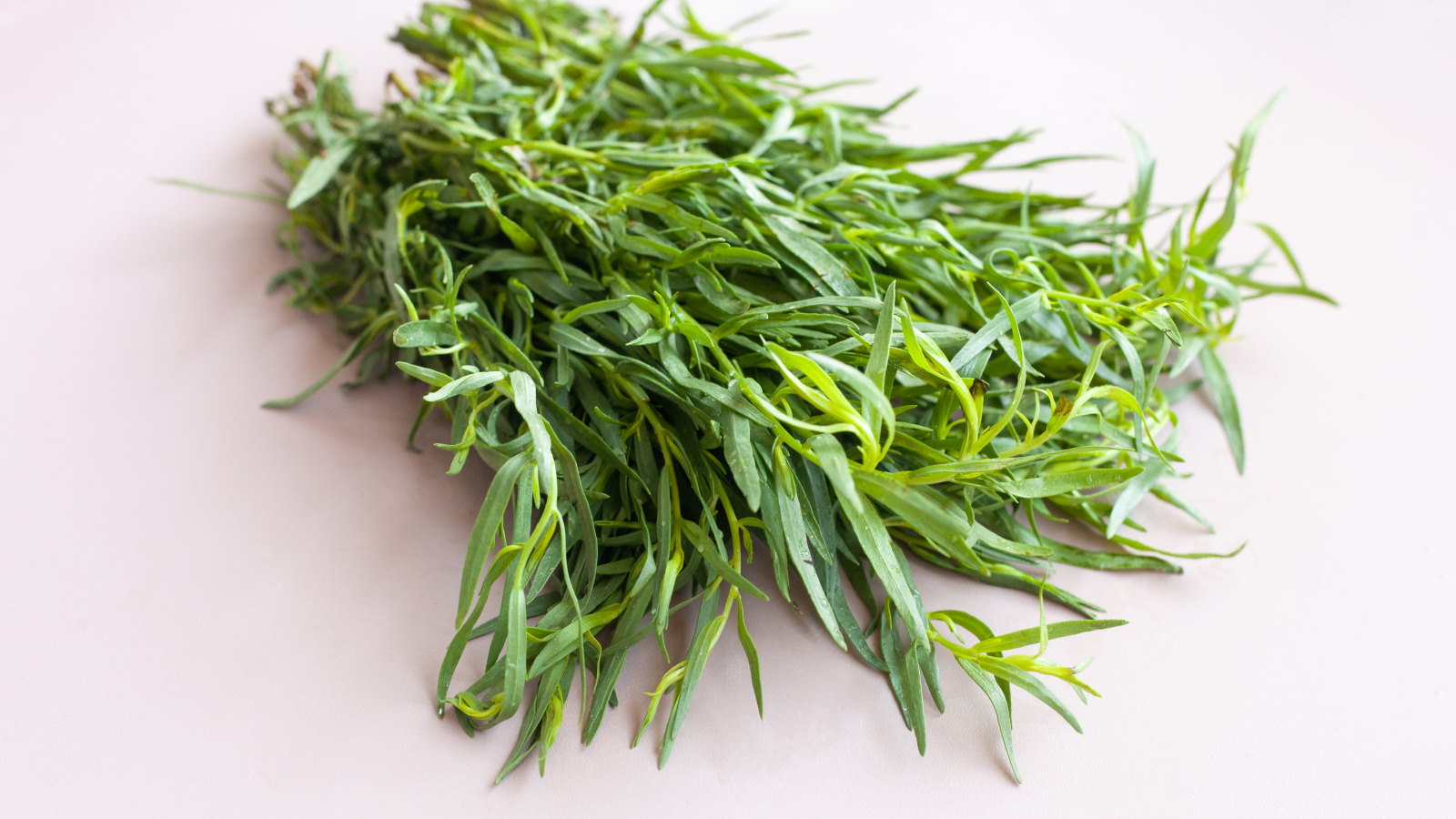
Tarragon is a prized perennial herb hugely popular in cooking, particularly in French cuisine, to add flavor to meat, fish, and egg dishes. The herb is grown for leaves that have a strong, sweet, and licorice-like flavor. As well as in cooking, tarragon has many medicinal properties, including helping with digestive issues and sleep problems and reducing toothache thanks to its natural anaesthetic properties.
Tarragon is a tall and sturdy herb that produces upright stems with narrow, long leaves. It is a very productive herb and just a couple of tarragon plants in a herb garden can provide all the leaves you need throughout the year. There are different types of tarragon to choose between to grow, differing in size, hardiness, and flavors.

This aromatic herb was popular when I supplied chefs with vegetables, herbs, and fruits. I had several tarragon plants in the walled garden and, with regular harvesting, they were kept attractive, bushy, and productive. If you want to discover how to grow tarragon, I share my knowledge of the plants and get advice from two experienced horticulturists to reveal all you need to know about planting and growing tarragon.
There are two common forms of Tarragon, French tarragon ( Artemesia dracunculus ) and Russian tarragon ( Artemesia dracunculoides ), along with Mexican tarragon ( Tagetes lucida ) which is in the marigold genus but the leaves still have the strong tarragon flavor. This guide will focus on growing French and Russian tarragon. Where to grow tarragon If you want to plant tarragon, both French and Russian types are available to buy from garden centers, nurseries, or online, or plants can be raised from seed and cuttings.
Plant tarragon after the last frost in spring and space plants at least 18 inches apart for French tarragon and 24 inches apart for the larger Russian tarragon. Both types of tarragon require similar conditions to thrive. ‘Tarragon thrives in full sun and needs well-drained, sandy soil,’ says Rebecca Sears , plant expert for Ferry-Morse.
‘It prefers a slightly acidic to neutral pH, which you can easily determine with a pH meter. Ensure the soil is fertile, with good drainage to prevent root rot.’ You can get a simple soil Ph meter at Amazon .
Good drainage is important as tarragon does not like having wet roots. Adding organic matter, sand, or grit to heavier soil types can help to improve drainage. The best option is to mix compost into the soil to improve the structure, help drainage and boost soil nutrients over time.
As CMO and resident green thumb for the Green Garden family of brands, Rebecca Sears nurtures the company's heritage but also looks to develop new products and solutions to help gardeners of all skill levels fuel their passion and become more successful in the garden. A live French tarragon plant to add to your backyard for harvests of soft, strappy, narrow green leaves with flavors similar to anise, licorice, and fennel. How to grow tarragon from seed Russian tarragon is a simple herb to grow from seed, which can be done indoors or outdoors.
A pack of organic Russian tarragon seeds. These seeds can be sown indoors or outdoors and should take 10 to 14 days to germinate. How to grow tarragon from cuttings As mentioned earlier, French tarragon cannot be grown from seed but you can propagate the herb by taking plant cuttings .
Grow French tarragon from softwood cuttings of new growth taken in late spring or late summer - summer cuttings can be overwintered indoors to plant out next spring. Care tips for tarragon How to grow tarragon in a container Tarragon can grow successfully in container gardens or a balcony herb garden and French types will benefit as the pot can be moved to a protected environment over winter. ‘Tarragon is well-suited for container growing because it doesn't require a lot of space, and its preference for well-drained, sandy soil makes it easy to manage in pots,’ says Rebecca Sears.
You need a large container at least 12 inches deep filled with good potting soil for herbs , such as Burpee's Premium Organic Potting Soil from Amazon . Tarragon plants put out large taproots and can outgrow a pot after a few years, so you will need to divide plants every 2-3 years or propagate new ones from cuttings. Keep the container in a sunny spot and pay close attention to watering plants in containers , especially during the summer.
FAQs Tarragon can be planted next to most vegetables and many herbs, including rosemary, sage, parsley, and chives. It is great for companion planting as its scent emits many pests. Tarragon prefers a sunny position but may benefit from part-shade in warmer US hardiness zones where temperatures exceed 80°F in the summer, such as a spot with some protection from the intense rays in the afternoon.
Tarragon can tolerate a partially shaded growing position. If you want more plants for free, dividing tarragon can be done every 3-5 years to get new plants and rejuvenate older ones. Divide plants in late winter or early spring, lift plants with a garden fork and you should be able to pull apart sections with healthy roots to pot up and grow on ahead of planting out into the garden.
.














